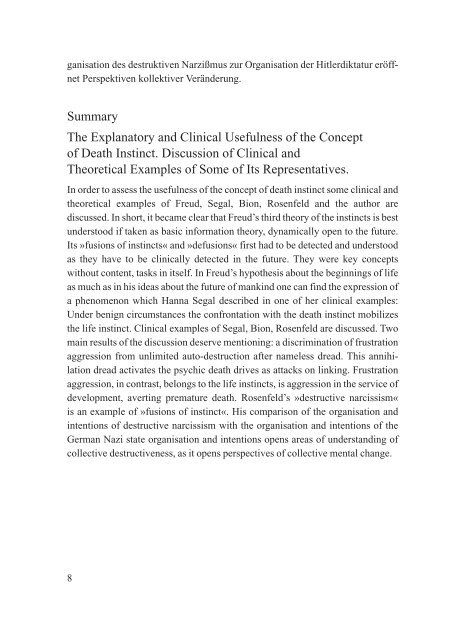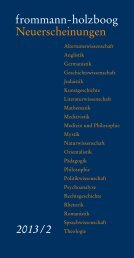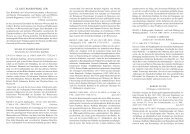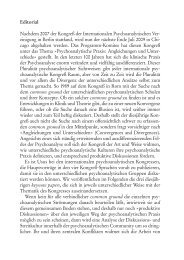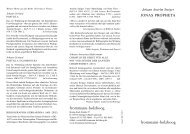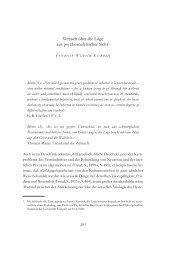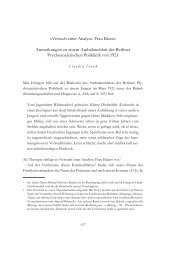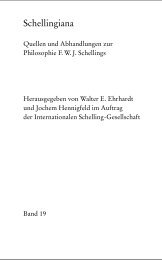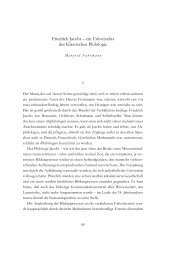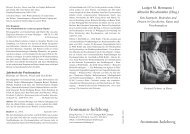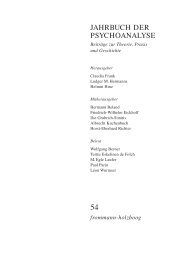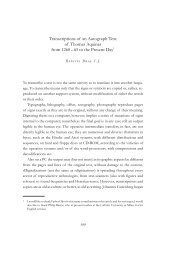und Summaries (PDF-Download, 27 kB) - Frommann-Holzboog
und Summaries (PDF-Download, 27 kB) - Frommann-Holzboog
und Summaries (PDF-Download, 27 kB) - Frommann-Holzboog
Sie wollen auch ein ePaper? Erhöhen Sie die Reichweite Ihrer Titel.
YUMPU macht aus Druck-PDFs automatisch weboptimierte ePaper, die Google liebt.
ganisation des destruktiven Narzißmus zur Organisation der Hitlerdiktatur eröffnet<br />
Perspektiven kollektiver Veränderung.<br />
Summary<br />
The Explanatory and Clinical Usefulness of the Concept<br />
of Death Instinct. Discussion of Clinical and<br />
Theoretical Examples of Some of Its Representatives.<br />
In order to assess the usefulness of the concept of death instinct some clinical and<br />
theoretical examples of Freud, Segal, Bion, Rosenfeld and the author are<br />
discussed. In short, it became clear that Freud’s third theory of the instincts is best<br />
<strong>und</strong>erstood if taken as basic information theory, dynamically open to the future.<br />
Its »fusions of instincts« and »defusions« first had to be detected and <strong>und</strong>erstood<br />
as they have to be clinically detected in the future. They were key concepts<br />
without content, tasks in itself. In Freud’s hypothesis about the beginnings of life<br />
as much as in his ideas about the future of mankind one can find the expression of<br />
a phenomenon which Hanna Segal described in one of her clinical examples:<br />
Under benign circumstances the confrontation with the death instinct mobilizes<br />
the life instinct. Clinical examples of Segal, Bion, Rosenfeld are discussed. Two<br />
main results of the discussion deserve mentioning: a discrimination of frustration<br />
aggression from unlimited auto-destruction after nameless dread. This annihilation<br />
dread activates the psychic death drives as attacks on linking. Frustration<br />
aggression, in contrast, belongs to the life instincts, is aggression in the service of<br />
development, averting premature death. Rosenfeld’s »destructive narcissism«<br />
is an example of »fusions of instinct«. His comparison of the organisation and<br />
intentions of destructive narcissism with the organisation and intentions of the<br />
German Nazi state organisation and intentions opens areas of <strong>und</strong>erstanding of<br />
collective destructiveness, as it opens perspectives of collective mental change.<br />
8


